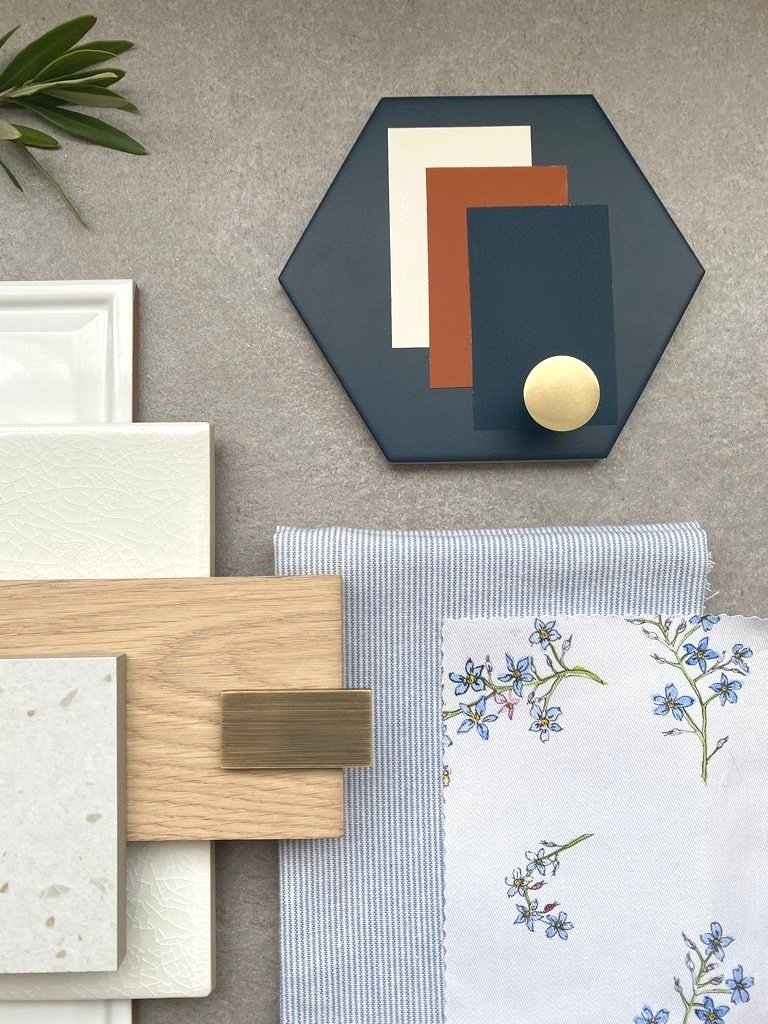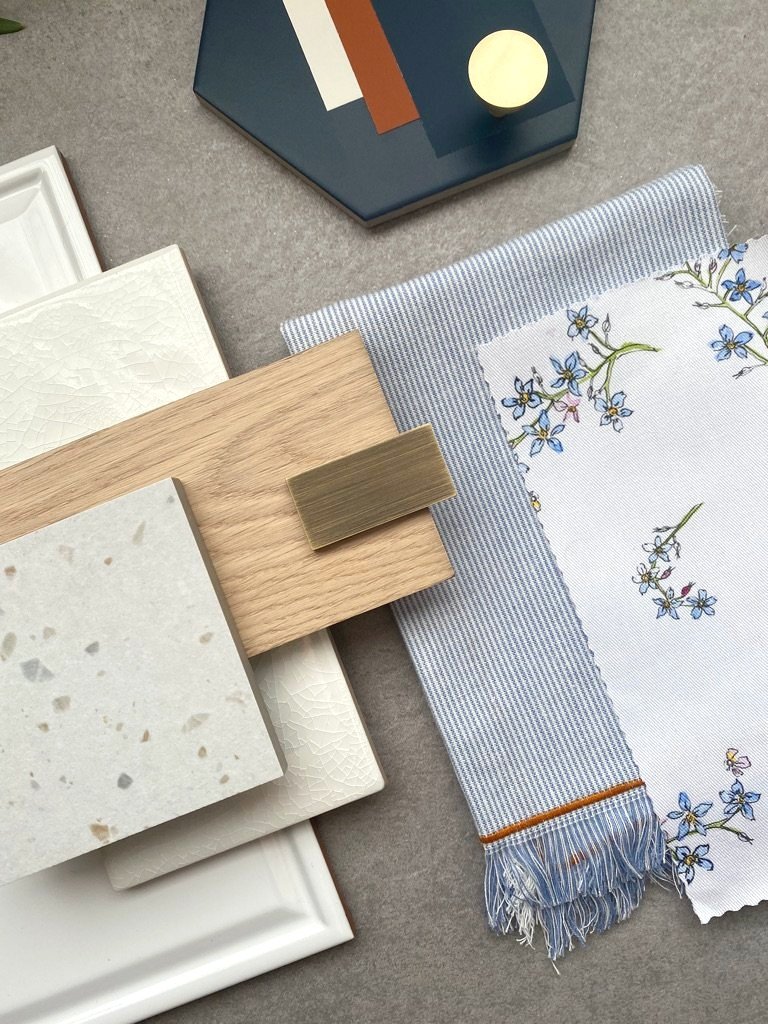Simple Interior Styling Tips for Period Homes
/This month we welcome a blog contribution from Kimber Gray of Graded Interiors Plymouth. Kimber has a wealth of knowledge on Interior design for period properties. This is thanks in part to her BA in Heritage Interior Design, but more than this she brings a great eye and natural flare for pattern and colour to bring historic spaces to life. Read on for some simple top tips on styling for period homes.
Styling your home can be one of the most rewarding parts of making a house your own. The exciting adventures to explore new shops for THE perfect sofa cushions, scanning various colour cards to find that orange shade you really like or browsing the internet for the latest must have interior trends. The styling stage is an exciting time, but what if you live in a period property?
Period properties, including listed buildings, can cover many eras of design such as the popularly known Georgian and Victorian to Art deco, and if you live in a period property, knowing how to style it can be a little more daunting. Should you try to incorporate the history of the building/era? Or style it how you heart desires and historical details be damned (Please note, if a Listed building owner, you must obtain consent before changing any details within or outside of the property or you will be liable for a whole host of fines, remedial actions and be put on the local councils naughty list and we don’t want that!).
As an Interior designer specialising in listed buildings, I find beauty and interest in all historical details, but I know how difficult they can be to work with and how important it is to have a home that is so you, you can’t help but smile and want to spend all your time in.
So, I have here for you period property loving lovelies, a handy little guide to some simple elements of styling that you can use to help create the perfect interior for you and your heritage home without touching any of the significant architectural details.
Cushion Party
One of the simplest ways of defining an interior scheme is to use cushions and throws to add colour, interesting detail, and texture. One important factor is to group cushions together. I often see one, lonely cushion either end of a sofa crying out for friends, and it always makes the scheme appear unfinished and flat. Try to use either two or three cushions per group and vary the size. Start with a large cushion at the back and work forward with smaller ones to balance the group. They don’t have to all be the same shape or pattern either, try a small round shape or rectangle to add to your cushion party. Lastly, don’t under fill your cushions or they can end up looking like yesterday’s droopy teabags. Try going up a size on the internal pad to the cushion cover size to give your cushions a full and luxurious look.
Mixing Patterns
Many period property owners choose to stay true to the era of their home and use patterns popular at the time. This is a great choice, but if you use the same pattern on all your curtains and cushions it can become repetitive and overbearing. I always say don’t be afraid to try and mix patterns. As an example, stripes and florals can work well together in a heritage context. The important part is to know your colour pallet.
If you know the colours you want within your home, when you are shopping for patterns to mix, it will make finding a cohesive group that much easier and give your interiors a professional finish. Also, if you want to stay true to the era but like things a little different, there are floral designs available that would be perfect for period interiors that incorporate unusual details such as snakes disguised as vines and beetles and skulls hidden within flowers. So why not shop around your local textile designers to see what amazing and unique designs they have to offer and create a period scheme with a subtle difference.
Choosing the Perfect Colour Combination
Colour is always one of the most difficult things to pin down when it comes to interior schemes and the overwhelming amount of choice can often strike fear into my client’s eyes. It is a whole science that, unfortunately, we don’t have enough time for today, but I have a few little tips that can help you find the perfect shades for your period homes. The key is to take your time and don’t be afraid.
Have a look to see what colours were popular for your homes era and see if you are drawn to any. If not, use these colours as a guide and find something close to them that does have you excited to find a tester pot.
You may have also heard opinions surrounding colour such as “you can’t paint a small room in a dark colour” or “the ceiling has to be white” but I think when it comes to colour, you can really experiment and let your creativity blossom. I have seen some beautiful Georgian interiors painted in the darkest of hues including the ceiling and they looked beautiful. Now I’m not telling you to go and paint your Edwardian terrace entirely in midnight blue, but, if you take your time choosing colours, you will find the right one to suite your home AND your tastes.
Now, if you are a little on the impatient side and have your walls re-painted before you’ve even had chance to boil the kettle, don’t despair. Paint is one of the easiest design decisions to correct when it comes to interior changes so don’t be afraid but do take your time choosing so you don’t waste money or time. (Again, if you own a listed property, you may require consent to paint internal walls so please speak to your local council first as listing protection covers the internals and externals of a property).
If you spend time on your colour selection and always use sample pots to test first, (for the love of interiors, please give sample pots a try) you will be able to find the perfect colour. I recommend painting an a4 piece of card/paper and sticking to the wall so you can experience that colour fully. Light changes throughout the day and by seeing a proposed colour in all lights, you will get a truer picture and see if it’s the right colour for you and the room.
Pick and Mix Decorative Items
We all have decorative items in our homes that we love whether for sentimental reasons or because we just enjoy looking at them or owning them. For me, it’s antique candlestick holders and artwork, I have them all over my home and they bring me so much joy. Whatever your favourite decorative items are, whether period appropriate or not, don’t be afraid to display them. Vases, sculptures, books, these can all be wonderful additions to a period home that can be styled on shelves or worktops and can help your interior scheme feel like your personality is now part of the fabric of the building.
The other benefit of decorative items is that they are not fixed so can be changed around or added to over time which will add character to your period property and create interesting talking points with family and friends. Grouping together in three’s is a successful way to display decorative items and again, like cushion groups, think about using different sizes together to create balance. So that completes my list of some simple styling tips to help you create a more successful and personalised interior for your period home. Remember to take a little time and enjoy the process of selecting the finishes and you will have your period property ready to shine in all its unique and beautiful glory.




